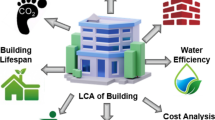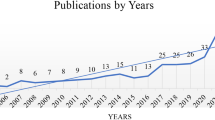Abstract
The application of building information modeling (BIM) in the Vietnamese construction industry is still in its early stage, both in perception and practice. This leads to a necessity of an effective legal system and standards for BIM implementation. In this study, a systematic literature review was conducted, including relevant references from journals, conference proceedings, and graduate-level theses published from 2008 to date, to identify legal issues and their potential solutions. The identified legal issues were analyzed in relation to the Vietnamese construction sector, and then verified and assessed through a survey. Both Friedman test and Wilcoxon signed-rank test were applied to rank the BIM legal issues. The findings show that the most significant barrier in adopting BIM is the lack of consistency and participation of stakeholders in the BIM implementation process. Expert interview was conducted to evaluate the solutions for BIM legal issues in the Vietnamese construction market. Through surveys and expert interviews, various legal issues, risks, and barriers associated with the adoption of BIM in the Vietnamese construction industry were identified and addressed. Information about BIM contract awareness and experiences was also revealed, which would help verify the risks affecting the parties in a BIM-inclusive construction project, as well as those affecting information exchange and intellectual property rights in Vietnam. Finally, the paper suggests a set of critical success factors and a contractual framework that would lead to a successful BIM-inclusive construction contract in Vietnam.





(source: ISO 19650)

(source: ISO 19650)



Similar content being viewed by others
References
Sun C, Jiang S, Skibniewski MJ et al (2015) A Literaturer review of the factors limiting the application of BIM in the construction industry. Technol Econ Dev Econ 23:764–779. https://doi.org/10.3846/20294913.2015.1087071
Bui N, Merschbrock C, Munkvold BE (2016) A review of building information modelling for construction in developing countries. Procedia Eng 164:487–494. https://doi.org/10.1016/j.proeng.2016.11.649
Jayasudha K, Vidivelli B (2016) Analysis of major risks in construction projects. ARPN J Eng Appl Sci 11:8. https://ajouronline.com/index.php/AJAS/article/view/3235
Dao TN, Nguyen TQ, Chen PH (2019) BIM adoption in construction projects funded with state-managed capital in Vietnam: legal issues and proposed solutions. Springer, Singapore
Fan S-L, Lee C-Y, Chong H-Y, Skibniewski MJ (2018) A critical review of legal issues and solutions associated with building information modelling. Technol Econ Dev Econ 1(24):2098–2130. https://doi.org/10.3846/tede.2018.5695
Su-Ling F (2014) Intellectual property rights in building information modeling application in Taiwan. J Constr Eng Manag 140:04013058. https://doi.org/10.1061/(ASCE)CO.1943-7862.0000808
Hsu K-M, Hsieh T-Y, Chen J-H (2015) Legal risks incurred under the application of BIM in Taiwan. Proc Inst Civ Engineers Forensic Eng 168:127–133. https://doi.org/10.1680/feng.14.00005
Ashcraft HW (2008) Building information modeling: a framework for collaboration. vol 28, no 3, Summer 2008, p 5–18 HeinOnline 15. https://heinonline.org/HOL/License
Li P, Zheng S, Si H, Xu K (2019) Critical challenges for BIM adoption in small and medium-sized enterprises: evidence from China. Adv Civ Eng 2019:1–14. https://doi.org/10.1155/2019/9482350
Hawary ANE, Nassar AH (2016) The effect of building information modeling (BIM) on construction claims. Int J Sci Technol Res 5:9. https://www.ingentaconnect.com/content/doaj/22778616/2015/00000004/00000008/art00106
Azhar S (2011) Building information modeling (BIM): trends, benefits, risks, and challenges for the AEC industry. Leadership Manag Eng 11:241–252. https://doi.org/10.1061/(ASCE)LM.1943-5630.0000127
Fan S-L, Chong H-Y, Liao P-C, Lee C-Y (2019) Latent provisions for building information modeling (BIM) contracts: a social network analysis approach. KSCE J Civ Eng. https://doi.org/10.1007/s12205-019-0064-8
Olatunji OASW (2010) Legal implications of BIM: model ownership and other matters arising. In: W113—special track 18th CIB world building congress May 2010 Salford, United Kingdom
Redmond A, Hore AV (2010) Developing a cloud integrated life cycle costing analysis model through BIM, p 11
Chong H-Y, Fan S-L, Sutrisna M et al (2017) Preliminary contractual framework for BIM-enabled projects. J Constr Eng Manage 143:04017025. https://doi.org/10.1061/(ASCE)CO.1943-7862.0001278
Olatunji OA (2016) Constructing dispute scenarios in building information modeling. J Leg Aff Dispute Resolut Eng Constr 8:C4515001. https://doi.org/10.1061/(ASCE)LA.1943-4170.0000165
Simonian L, Korman T (2010) Legal Considerations in the United States Associated with Building Information Modeling. In: RICS COBRA2010, Royal Institution of Char- tered Surveyors, London, London, p 9
Porwal A, Hewage KN (2013) Building information modeling (BIM) partnering framework for public construction projects. Autom Constr 31:204–214. https://doi.org/10.1016/j.autcon.2012.12.004
Alwash A, Love PED, Olatunji O (2017) Impact and remedy of legal uncertainties in building information modeling. J Leg Aff Dispute Resolut Eng Constr 9:04517005. https://doi.org/10.1061/(ASCE)LA.1943-4170.0000219
Bataw A, Kirkham R (2013) Making BIM a Realistic Paradigm rather ain just another Fad. In: University of Manchester’s Takedown Procedures BIM Management and Interoperability (pp 11–21).ARCOM:13. https://man.ac.uk/04Y6Bo
Dougherty JM (2015) Claims, disputes and litigation involving BIM. Routledge, New York
Gu N, London K (2010) Understanding and facilitating BIM adoption in the AEC industry. Autom Constr 19:988–999. https://doi.org/10.1016/j.autcon.2010.09.002
Hamdi O, Leite F (2014) Conflicting Side of Building Information Modeling Implementation in the Construction Industry. J Leg Aff Dispute Resolut Eng Constr 6:03013004. https://doi.org/10.1061/(ASCE)LA.1943-4170.0000137
Foster LL (2008) Legal issues and risks associated with Building Information Modeling technology. Dissertation, University of Kansas, University of Kansas
Abd Jamil AH, Fathi MS (2018) Contractual challenges for BIM-based construction projects: a systematic review. Built Env Proj and Ass Man 8:372–385. https://doi.org/10.1108/BEPAM-12-2017-0131
Alfred DBAMS, Ozbek ME (2012) Building Information modeling and potential legal issues. Int J Constr Educ Res 8(146–156):11. https://doi.org/10.1080/15578771.2011.617808
Eadie R, Browne M, Odeyinka H et al (2013) BIM implementation throughout the UK construction project lifecycle: an analysis. Autom Constr 36:145–151. https://doi.org/10.1016/j.autcon.2013.09.001
Eadie R, Odeyinka H, Browne M et al (2014) Building Information modelling adoption: an analysis of the barriers to implementation. J Eng Archit 2:25
Gardezi SSS, Shafiq N, Nuruddin MF et al (2014) Challenges for Implementation of building information modeling (BIM) in Malaysian construction industry. AMM 567:559–564. https://doi.org/10.4028/www.scientific.net/AMM.567.559
Kuiper I, Holzer D (2013) Rethinking the contractual context for building information modelling (BIM) in the Australian built environment industry. CEB 13:1–17. https://doi.org/10.5130/AJCEB.v13i4.3630
Manderson A, Jefferies M, Brewer G (2015) Building information modelling and standardised construction contracts: a content analysis of the GC21 contract. CEB 15:72–84. https://doi.org/10.5130/AJCEB.v15i3.4608
Mehran D (2016) Exploring the adoption of BIM in the UAE construction industry for AEC firms. Procedia Eng 145:1110–1118. https://doi.org/10.1016/j.proeng.2016.04.144
Khoshnava SM, Ahankoob A, Rostami R, Preece C (2017) Potential application of BIM in construction dispute and conflict. In: Management in construction research association (MiCRA), p 7
Lu Y, Wu Z, Chang R, Li Y (2017) Building information modeling (BIM) for green buildings: a critical review and future directions. Autom Constr 83:134–148. https://doi.org/10.1016/j.autcon.2017.08.024
Winfield M (2015) Building information modeling: the legal frontier—overcoming legal and contractual obstacles. In: Society of Construction Law 18
Douglas B, Arensman MSA, Ozbek ME (2009) Building information modeling and potential legal issues. Int J Constr Educ Res 8:146–156
Atazadeh B, Kalantari M, Rajabifard A, Ho S (2017) Modelling building ownership boundaries within BIM environment: a case study in Victoria, Australia. Comput Environ Urban Syst 61:24–38. https://doi.org/10.1016/j.compenvurbsys.2016.09.001
Salman A (2008) Building information modeling (BIM): a new paradigm for visual interactive modeling and simulation for construction projects. In: Proceedings of the first international conference on construction in developing countries (ICCIDC-I), Karachi. Advancing and Integrating Construction Education, Research & Practice, Karachi, Pakistan
Ghaffarianhoseini A, Tookey J, Ghaffarianhoseini A et al (2017) Building Information Modelling (BIM) uptake: clear benefits, understanding its implementation, risks and challenges. Renew Sustain Energy Rev 75:1046–1053. https://doi.org/10.1016/j.rser.2016.11.083
Huzaimi AJA, Syazli FM (2019) Contractual issues for building information modelling (BIM)-based construction projects: an exploratory case study. In: IOP conference series: materials science and engineering, p 012035
Olatunji OA (2014) Views on building information modelling, procurement and contract management. Proc Inst Civ Engineers Manag Procure Law 167:117–126. https://doi.org/10.1680/mpal.13.00011
Singh V, Gu N, Wang X (2011) A theoretical framework of a BIM-based multi-disciplinary collaboration platform. Autom Constr 20:134–144. https://doi.org/10.1016/j.autcon.2010.09.011
Zhao X, Wu P, Wang X (2018) Risk paths in BIM adoption: empirical study of China. Eng Constr Architect Manag 25:1170–1187. https://doi.org/10.1108/ECAM-08-2017-0169
Ku K, Taiebat M (2011) BIM experiences and expectations: the constructors’ perspective. Int J Constr Educ Res 7:175–197. https://doi.org/10.1080/15578771.2010.544155
Redmond A, Hore A, Alshawi M, West R (2012) Exploring how information exchanges can be enhanced through Cloud BIM. Autom Constr 24:175–183. https://doi.org/10.1016/j.autcon.2012.02.003
Volk R, Stengel J, Schultmann F (2014) Building information modeling (BIM) for existing buildings—literature review and future needs. Autom Constr 38:109–127. https://doi.org/10.1016/j.autcon.2013.10.023
Cerovsek T (2011) A review and outlook for a ‘Building Information Model’ (BIM): a multi-standpoint framework for technological development. Adv Eng Inform 25:224–244. https://doi.org/10.1016/j.aei.2010.06.003
Abdirad H (2015) Advancing in building information modeling (BIM) contracting: trends in the AEC/FM industry. In: AEI 2015. American Society of Civil Engineers, Milwaukee, Wisconsin, pp 1–12
Ahn YH, Kwak YH, Suk SJ (2016) Contractors’ transformation strategies for adopting building information modeling. J Manage Eng 32:05015005. https://doi.org/10.1061/(ASCE)ME.1943-5479.0000390
Costin A, Adibfar A, Hu H, Chen SS (2018) Building information modeling (BIM) for transportation infrastructure—literature review, applications, challenges, and recommendations. Autom Constr 94:257–281. https://doi.org/10.1016/j.autcon.2018.07.001
McAdam B (2010) Building information modelling: the UK legal context. Int J Law Built Env 2:246–259. https://doi.org/10.1108/17561451011087337
Arshad MF, Thaheem MJ, Nasir AR, Malik MSA (2019) Contractual risks of building information modeling: toward a standardized legal framework for design-bid-build projects. J Constr Eng Manag 145:04019010. https://doi.org/10.1061/(ASCE)CO.1943-7862.0001617
Palos S, Kiviniemi A, Kuusisto J (2014) Future perspectives on product data management in building information modeling. Constr Innov 14:52–68. https://doi.org/10.1108/CI-12-2011-0080
Porwal A, Hewage KN (2013) Building Information Modeling (BIM) partnering framework for public construction projects. Autom Constr 31:204–214. https://doi.org/10.1016/j.autcon.2012.12.004
Eadie R, McLernon T, Patton A (2015) AN investigation into the legal issues realting to Building Information Modeling (BIM). In: RICS COBRA AUBEA 2015. Royal Institution of Chartered Surveyors, Sydney, Australia, p 10
Hibberd P (2017) Sustainability—the role of construction contracts. In: Brandon PS, Lombardi P, Shen GQ (eds) Future challenges in evaluating and managing sustainable development in the built environment. Wiley, Chichester, pp 268–284
Kamal Hasni MIA, Ismail Z, Hashim N (2019) Contractual aspects in the utilisation of level two building information modelling (BIM) within Malaysian public construction projects. In: Mohd Ahnuar E, Mohd Nordin R, Yunus J, Abdul Rahman NA (eds) MATEC Web of Conferences, p 05002
Olawumi TO, Chan DWM, Wong JKW, Chan APC (2018) Barriers to the integration of BIM and sustainability practices in construction projects: a Delphi survey of international experts. J Build Eng 20:60–71. https://doi.org/10.1016/j.jobe.2018.06.017
Kihong Ku SNP (2009) Contractual Standards for enhanced geometry control in Model-based collaboration. J Inf Technol Constr 2009:19. https://www.itcon.org/2009/24
Chien K-F, Wu Z-H, Huang S-C (2014) Identifying and assessing critical risk factors for BIM projects: Empirical study. Autom Constr 45:1–15. https://doi.org/10.1016/j.autcon.2014.04.012
Migilinskas D, Popov V, Juocevicius V, Ustinovichius L (2013) The benefits, obstacles and problems of practical Bim implementation. Procedia Eng 57:767–774. https://doi.org/10.1016/j.proeng.2013.04.097
Arshad MF, Thaheem MJ, Nasir AR, Malik MSA (2019) Contractual risks of building information modeling: toward a standardized legal framework for design-bid-build projects. J Constr Eng Manage 145:04019010. https://doi.org/10.1061/(ASCE)CO.1943-7862.0001617
Corder GW, Dale I (2014) Foreman nonparametric statistics: a step-by-step approach, vol 2. Wiley, Hoboken
Rosner B, Glynn RJ, Lee M-LT (2006) The Wilcoxon Signed rank test for paired comparisons of clustered data. Biometrics. https://doi.org/10.1111/j.1541-0420.2005.00389.x
Alreshidi E, Mourshed M, Rezgui Y (2017) Factors for effective BIM governance. J Build Eng 10:89–101. https://doi.org/10.1016/j.jobe.2017.02.006
Acknowledgements
The authors would like to express their thanks to the Ministry of Science and Technology, Taiwan, and National Taiwan University for providing a subsidy for this paper.
Author information
Authors and Affiliations
Corresponding author
Rights and permissions
About this article
Cite this article
Dao, TN., Chen, PH. & Nguyen, TQ. Critical Success Factors and a Contractual Framework for Construction Projects Adopting Building Information Modeling in Vietnam. Int J Civ Eng 19, 85–102 (2021). https://doi.org/10.1007/s40999-020-00542-3
Received:
Revised:
Accepted:
Published:
Issue Date:
DOI: https://doi.org/10.1007/s40999-020-00542-3




